For another year, Covid-19 has dominated the news. But alongside the pandemic, we have also experienced the awesome impact of a changing climate, witnessed trailblazing missions to space, and seen some incredible science.
Here, in pictures, are some of the stories that shaped 2021:
On the rocks
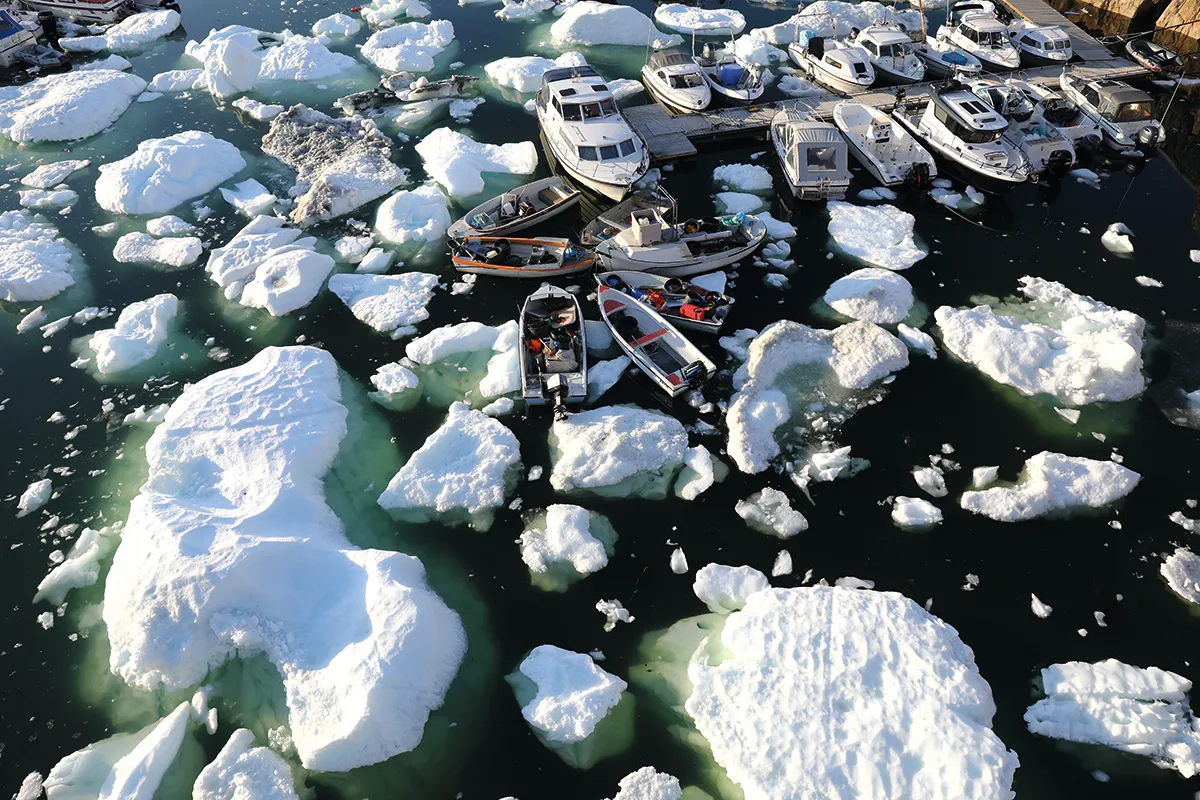
Ilulissat, Greenland
2 September
This picture of Ilulissat’s port in Greenland raises the question of why exactly there is ice floating in the water. The answer is becoming the response to an increasing number of enquiries: climate change.
Due to rising temperatures, 2021 saw Greenland experience the biggest melt of its ice sheet on record – enough to cover the entire state of Florida with five centimetres of water, according to Danish researchers. As parts of the ice sheet broke up, smaller chunks of ice ended up floating in Ilulissat’s port. As if that wasn’t concerning enough, for the first time in recorded history,rain fell onto the highest point of the Greenlandice sheet.
A shot inthe arm

Coventry, UK
8 December 2020
A round of applause from healthcare workers greets Margaret Keenan after she became the first person in Britain to receive the Pfizer-BioNTech COVID-19 vaccine. The 90-year-old grandmother was given her first dose on 8 December 2020 at University Hospital in Coventry to kick off the UK’s mass vaccination programme.
When the time came for her second dose in April 2021, around 28 million people in England had been given at least one jab, and Keenan had turned 91. Keenan made the headlines again in September when she became the first person in the world (outside of a clinical trial) to receivea vaccine booster shot.
Wandering lonely,under a cloud

Gale Crater, Mars
19 March
Perseverance wasn’t the only Martian rover making headlines in March. Curiosity got in on the act too, after snapping this shot of unusual clouds forming over Gale Crater, near the Red Planet’s equator. It’s unusual because the clouds formed earlier and higher than they usually do on this part of Mars.
The thin, dry atmosphere on Mars means clouds only tend to form when the planet’s elliptical orbit takes it furthest from the Sun. These ones began appearing in January, sooner than they were expected, beginning as small, wispy puffs before becoming the more substantial bodies seen here in March.
Most clouds on Mars are formed by water crystals and float at altitudes of around 60 kilometres, but analysis by the Curiosity team on Earth suggests
the clouds photographed in March are higher and are likely to contain frozen carbon dioxide.
So that’s what you look like

Beijing, China
January
COVID continued to dominate the news, and everyone’s lives, throughout 2021. But in January we got possibly our best look yet at the virus. By using a combination of cryo-electron tomography, machine learning and advanced visualisation algorithms, a team of experts from China’s Tsinghua University, King Abdullah University of Science and Technology in Saudi Arabia, and Vienna-based Nanographics, produced this high-resolution 3D image of the SARS-CoV-2 virus.
We had images prior to this, but they were either models or composites constructed from different scans. This is the first single-scan, 3D image of the real virus (although the colours are artificial). You can see all 360° of it at nanographics.at/projects/coronavirus-3d/
Ghost detector
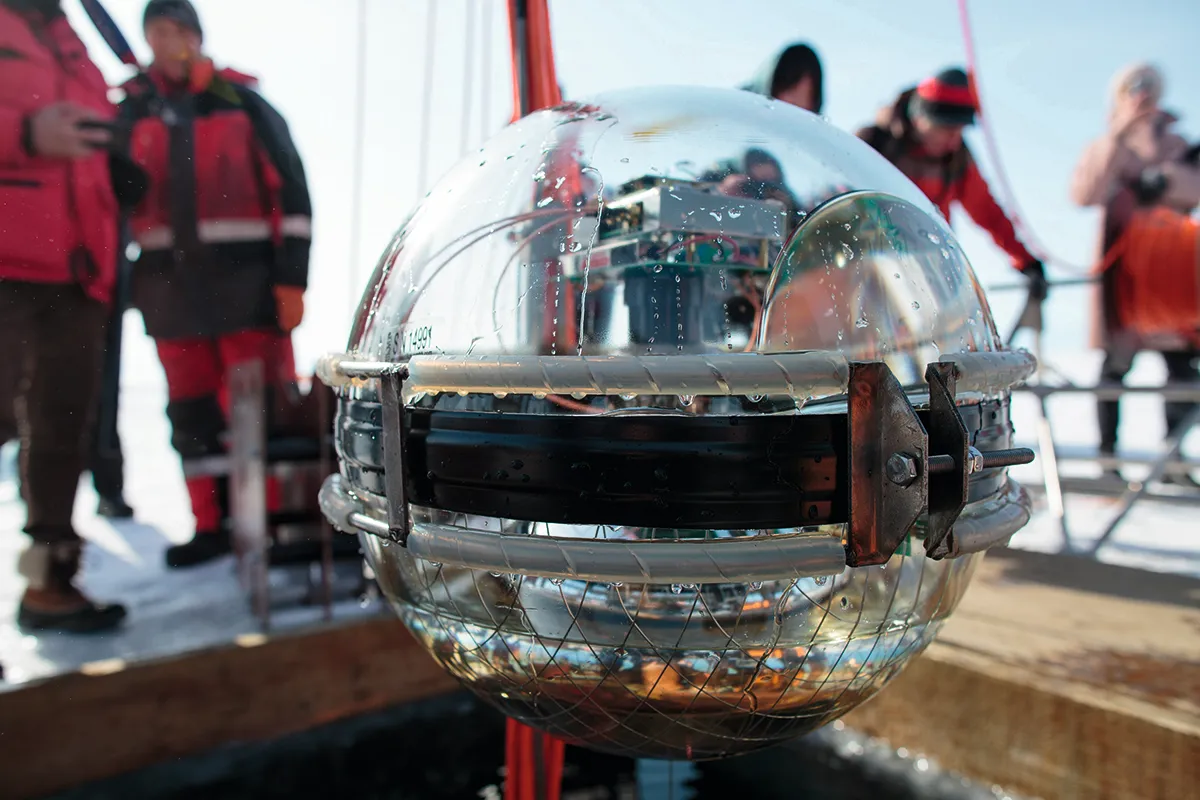
Lake Baikal, Siberia
13 March
It may not be what you typically think of as a crystal ball, but this strange-looking clear sphere could help us see ghosts. Ghost particles, that is, otherwise known as neutrinos. It’s one of the optic modules being used in the Baikal-Gigaton Volume Detector – essentially a telescope
made of eight vertical ‘strings’, each carrying 12 modules spaced 15 metres apart – being submerged around one kilometre below the ice of Siberia’s
Lake Baikal.
Neutrinos are thought to be the most abundant particle in the Universe, yet they have no electric charge, almost no mass and travel at nearly the speed of light. They’re extremely difficult to study because they don’t interact with matter or magnetic fields (hence they’re ghost-like). But they do emit a type of light, known as Cherenkov radiation, when they hit water. And that’s what the optic modules have been designed to pick up in the hope of confirming the existence of neutrinos and determining their sources.
We have lift off
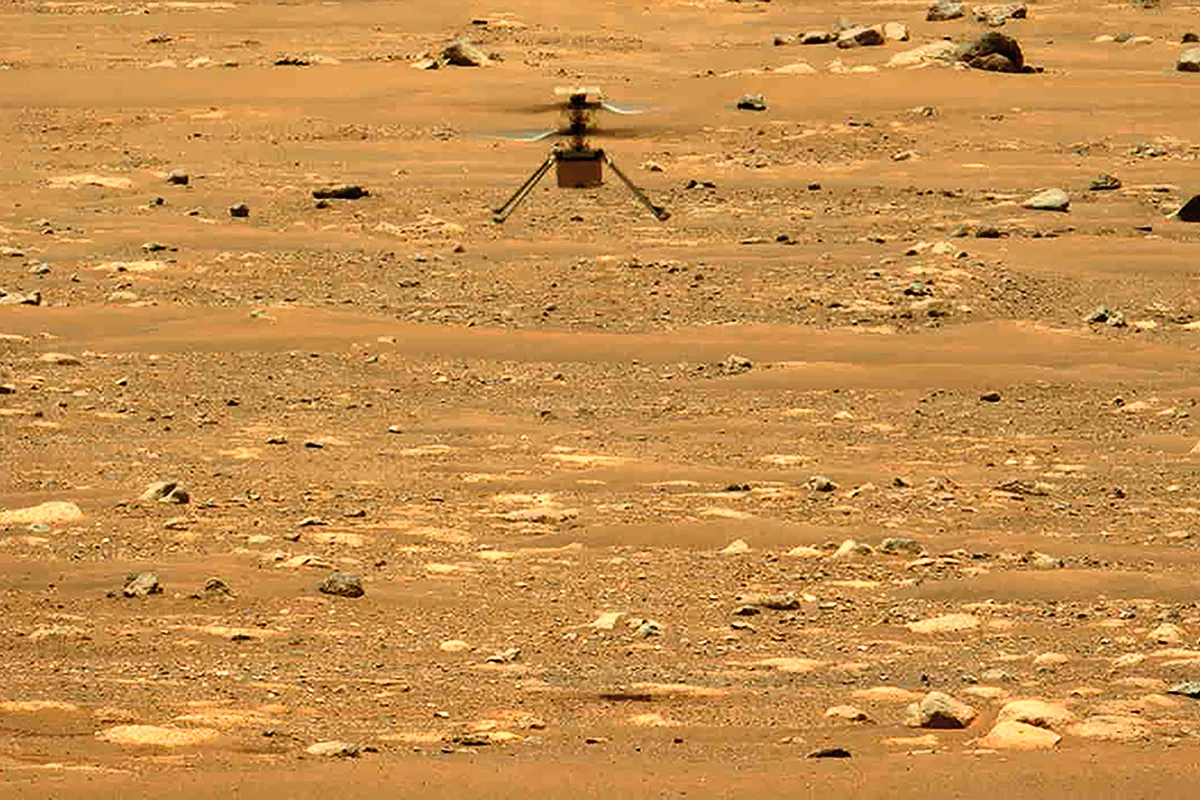
Jezero crater, Mars
22 April
April saw the first powered, controlled flight of a human-made aircraft on another planet, when NASA’s Ingenuity helicopter took to the Martian skies. The successful test flight, witnessed by cameras aboard the Perseverance rover, saw Ingenuity climb to an altitude of around three metres and hover for almost 40 seconds, before descending and – most importantly – landing safely.
The distance and signal delay between Mars and Earth meant Ingenuity’s maiden flight couldn’t be piloted by the team at Mission Control in NASA’s Jet Propulsion Lab. Instead, it flew autonomously, relying on its own guidance, navigation and control systems. At the time of writing, Ingenuity had made 16 successful flights, reaching heights of five metres, making sideways transitions and capturing images mid-flight of the Jezero Crater below.
Flying visit

Outskirts of Venus
10 August
That big white swathe arching through this image is Venus, as seen by the BepiColombo spacecraft during its seven-year journey to Mercury. BepiColombo is actually a pair of spacecraft – the European Space Agency’s Mercury Planetary Orbiter and the Japanese Aerospace Exploration Agency’s Mercury Magnetospheric Orbiter – and it caught this image of Venus in August while using our planetary neighbour’s gravity to slingshot itself on towards its final destination.
Once it reaches the smallest, innermost and least-explored planet in the Solar System, BepiColombo will study Mercury’s surface, internal composition and magnetic field. Its aim is to shed more light on this mysterious planet along with planet formation in general.
Biggerand bolder
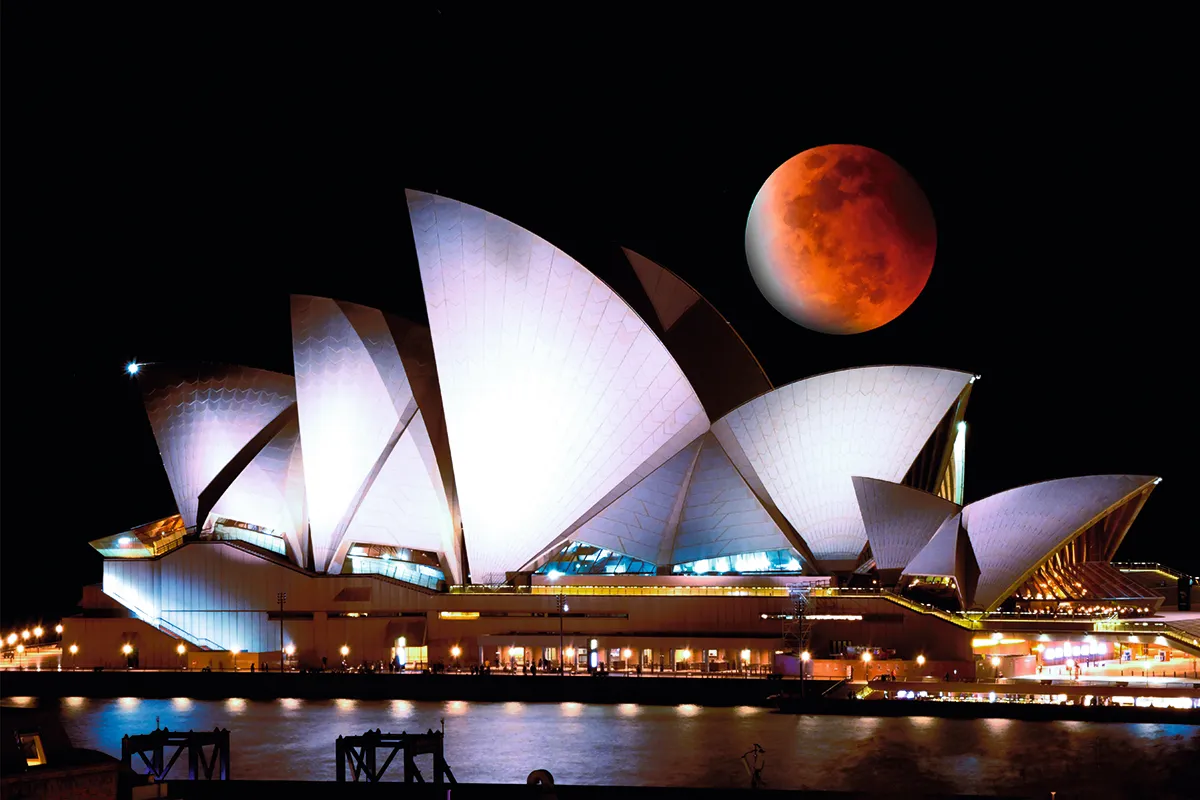
Sydney, Australia
26 May
The Moon made a spectacle of itself in May by undergoing an eclipse while at perigee, a combination that resulted in this eye-catching Super Blood Moon.
Perigee is the name given to the point in the Moon’s orbit that brings it closest to Earth, causing it to appear bigger than usual. The ‘blood’ part is, unsurprisingly, a result of it appearing red. This happens because as Earth passes between the Sun and Moon, the light that’s still able to reach the Moon passes through Earth atmosphere, which scatters the light towards the blue end of the spectrum. Light at the red end is able to make it through, but not unscathed. The red wavelengths are stretched, so appear redder and give the Moon a distinctive hue when they are reflected off its surface.
The next total lunar eclipse will take place in May 2022, and will be visible from the Americas, Europe, Africa and parts of Asia.
Time is money
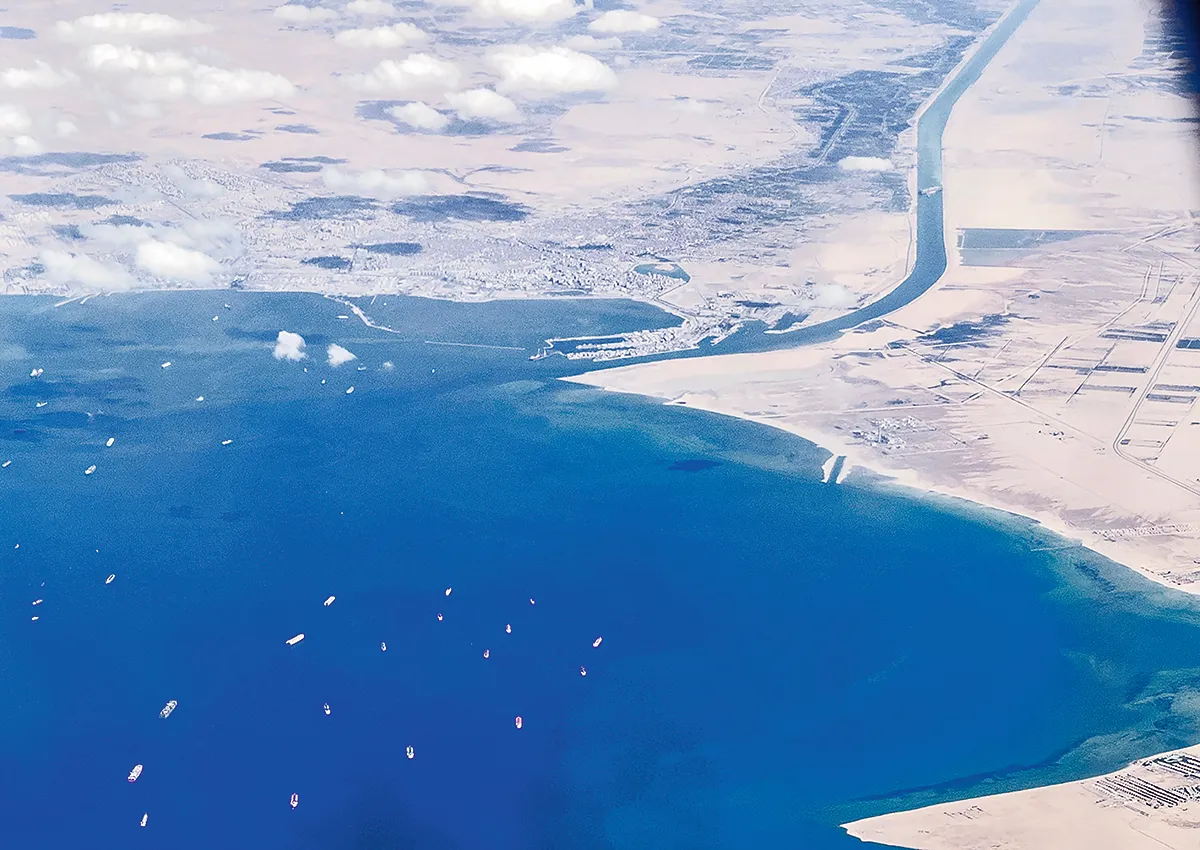
Suez canal, Egypt
27 March
This might be the world’s most expensive waiting room. The little white shapes spread around the lower left corner are container ships floating in Egypt’s Gulf of Suez. They’re queueing while engineers work to free another container ship – the 400m-long, 200,000-tonne MV Ever Given (near the top right corner) – after it ran aground in the Suez Canal on 23 March. This shot was taken on 27 March, two days before the ship was successfully refloated.
Shipping analysts Lloyd’s List estimated the blockage was holding up cargo worth $9.6bn (£7bn approx) each day. When it was finally freed on 29 March, the ship was immediately impounded by the Suez Canal Authority in a bid for compensation for the losses incurred during the salvage operation. The ship eventually set sail on 7 July.
Touch down
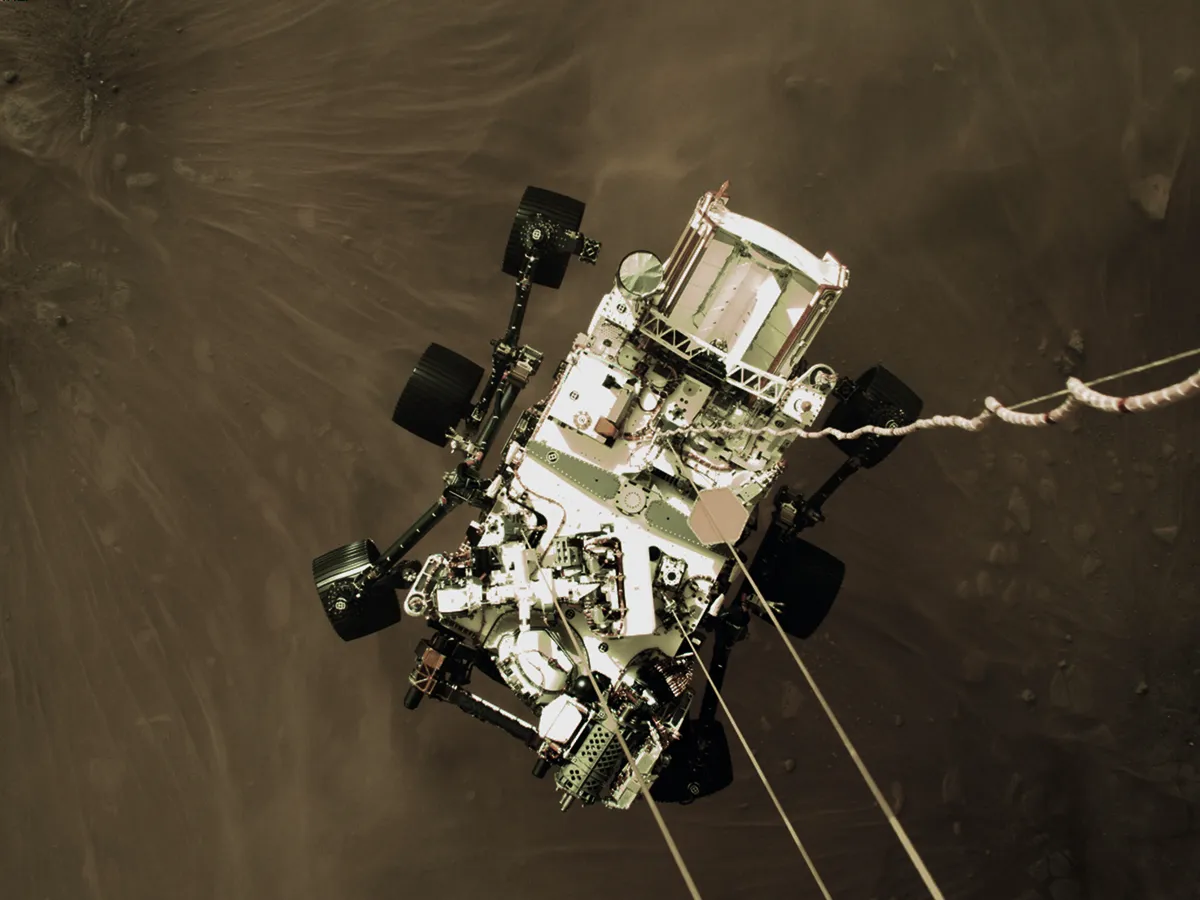
Surface of Mars
18 February
This was the view from the Descent Stage as it lowered NASA’s Perseverance Rover onto the surface of Mars. Essentially a jet pack, the Descent Stage used eight engines to bring the rover’s plunge through the Martian atmosphere to a halt, before winching it down the last few metres to
the ground.
This would be the last that the two vehicles saw of each other. After releasing the cables, the Descent Stage was programmed to fly off and make an ‘uncontrolled’ (crash) landing a safe distance from the rover. Perseverance, meanwhile, would begin exploring the surface and collecting samples that, in years to come, will be returned to Earth and analysed to learn about the planet’s geology and climate to see if it could host life – whether it be microbes in the past or humans in the future.
Gone in a flash
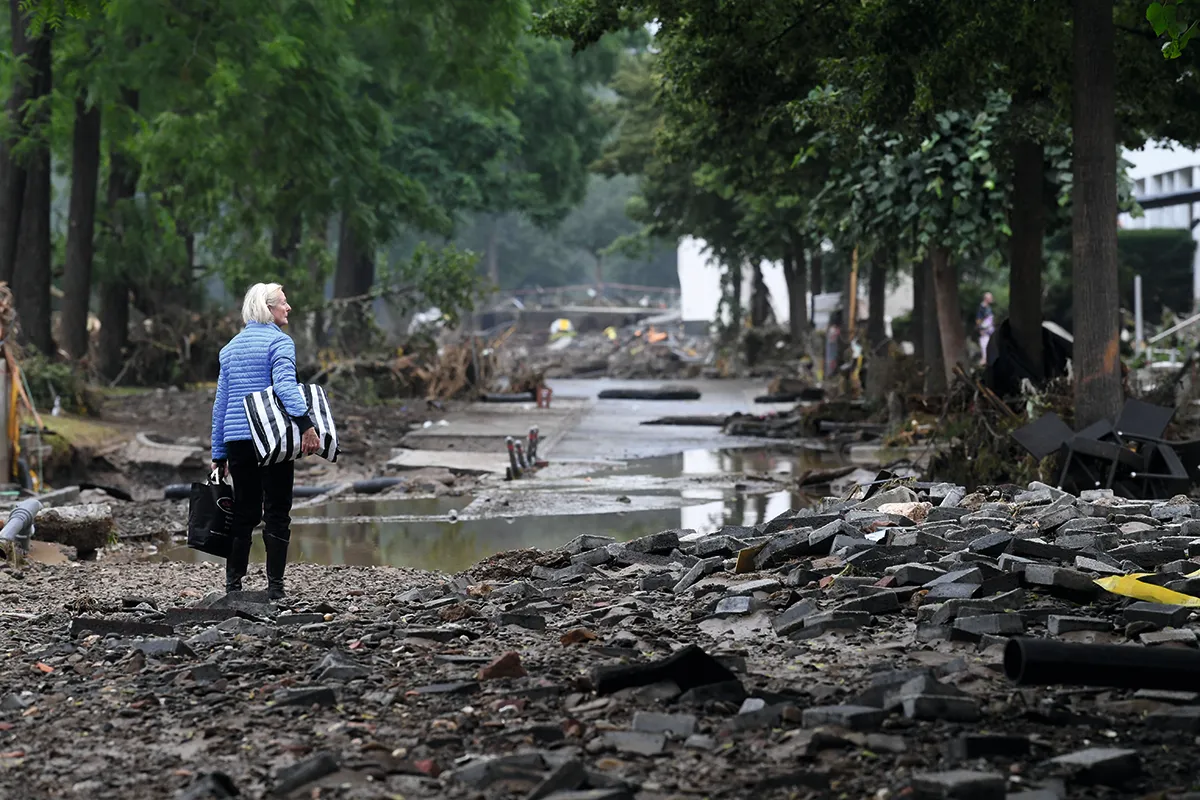
Bad Neuenahr-Ahrweiler, Germany
16 July
Record-breaking rainfall in Europe during July saw a number of countries devastated by flash floods and led to over 200 deaths across Germany (pictured here), Austria, Belgium, Italy and Romania. Cars, buildings and bridges were either damaged or entirely swept away, resulting in widespread power outages and, in some areas, emergency evacuations.
Officials in Austria’s Tyrol province reported water levels reached heights that hadn’t been seen in more than three decades. Studies carried out afterwards indicated that the rainfall over Belgium, the Netherlands and Germany had been 20 per cent heavier than usual due to climate change. It also found that further extreme weather events are now up to nine times more likely.
Handle withcare
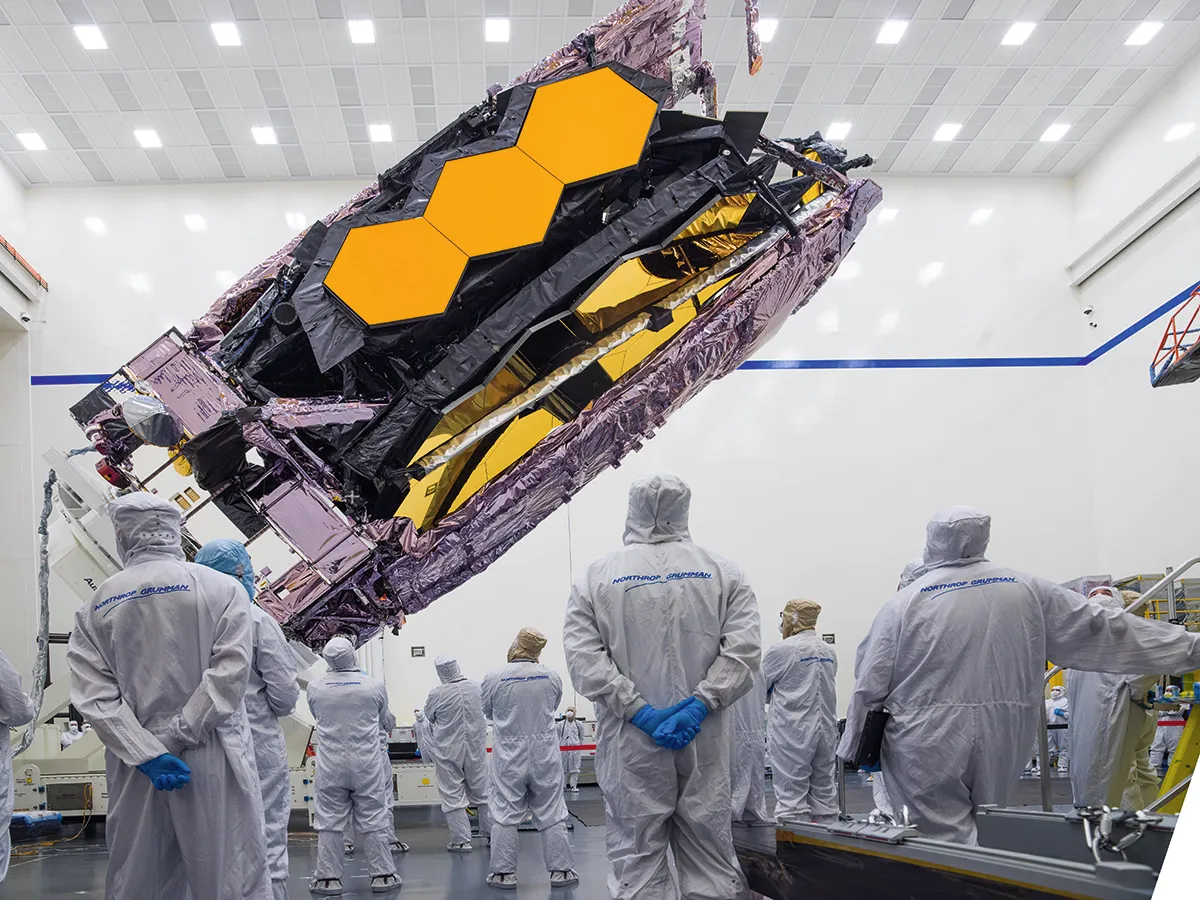
Redondo beach, California, USA
October
Packing for a long trip must be done thoughtfully and carefully, especially when your suitcase contains the $8.8bn (£6.5bn approx) James Webb Space Telescope (JWST) – seen here being prepared for its journey from Redondo Beach, California to the launch site in Kourou, French Guiana.
The suitcase for the JWST had to be specially made. It’s a 5 x 4m construction that NASA calls STARRS (Space Telescope Transporter for Air, Road and Sea) and carried the JWST for the entire duration of its 16-day voyage, which included two trips on trucks equipped to carry oversize loads and a 9,800km (5,800-mile) cruise aboard the MN Colibri cargo ship. It arrived, in one piece, on12 October.
Miracle house

La Palma, Canary Islands
23 September
Location is key when you’re buying a house, especially if you’re looking for property on an island known for its volcanic activity. This house on La Palma, the most northwesterly of Spain’s Canary Islands, narrowly avoided the lava flows that devastated a vast tract of land after Cumbre Vieja erupted on 19 September.
As pictures of the narrow escape began to circulate, it became known as the Miracle House. The miracle was short-lived, however, as the flows from the ongoing eruption had consumed the house by 30 September. Fortunately, its owners weren’t occupying it at the time and despite the eruption continuing into November, perhaps miraculously, no deaths had been reported at the time of writing.
Pea brain
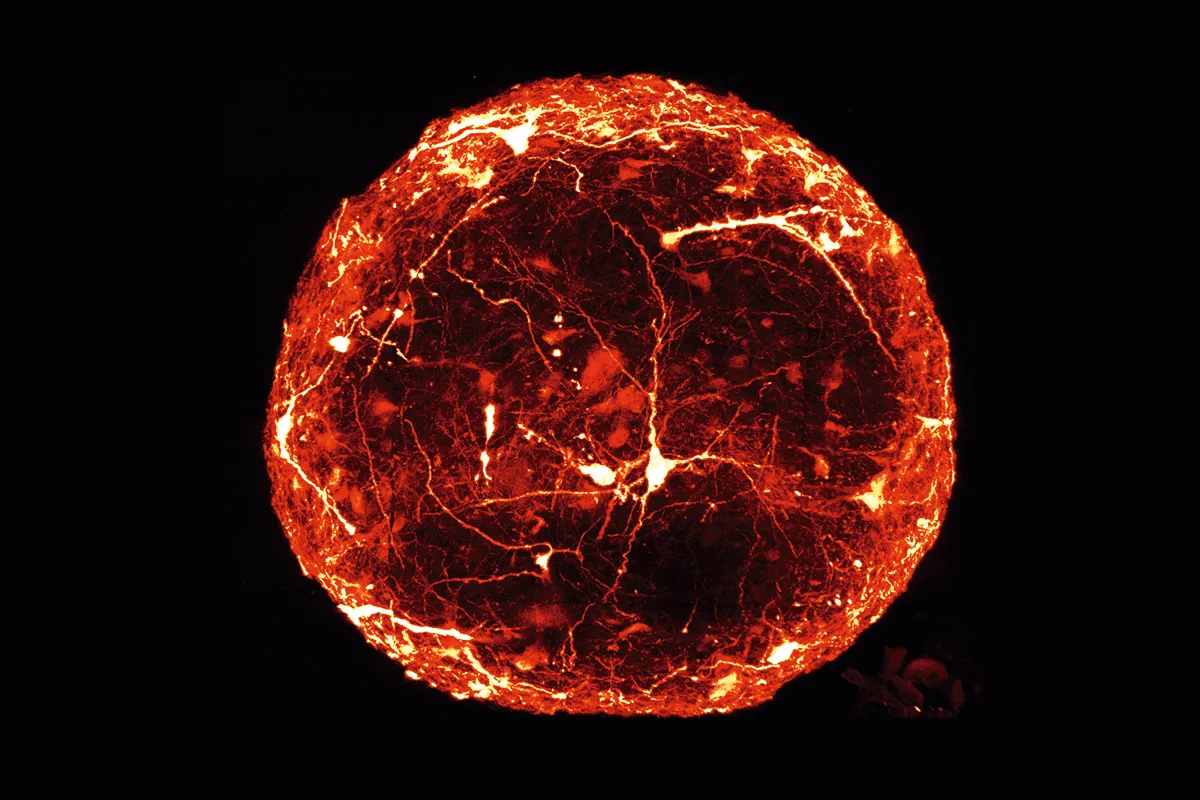
Geneva, Switzerland
7 January
No, this is not some newly discovered planet plagued by raging lightning storms and ferocious tectonic activity. It’s actually the first glimpse we’ve ever had of the internal structure of a mini-brain – a collection of brain cells no bigger than the size of a pinhead.
Mini-brains are grown from stem cells and could provide insights into how diseases and drugs affect the organ. Until 2021, the only way to see inside the mini-brains was to cut them into slices and examine them under a microscope; a slow, difficult procedure that can damage the samples. But scientists at the Geneva School of Engineering, Architecture and Landscape (HEPIA) and Wyss Center for Bio and Neuroengineering found a way to produce 3D images of intact mini-brains that could be used for analysis.
Check out more of our image galleries:
- Wildlife Photographer of the Year People's Choice images
- Amazing new images of the black hole at the centre of the Milky Way
- The supersonic aircraft that doesn’t go boom
Say ahh…

Leeds, UK
August
Thanks to this somewhat unsettling setup, your next trip to the dentist should be quicker and safer. It was part of a study, led by the University of Leeds, to determine which types of dental drills reduce the risk of spreading infections during dentistry procedures. The findings suggest that swapping high-speed air drills for slower electric drills could virtually eliminate the spray produced in the patient’s mouth during a procedure. Less spray means less time needed to clean and prepare the surgery between appointments, which should help address the backlog that built up during the COVID-19 lockdowns.
Bone head
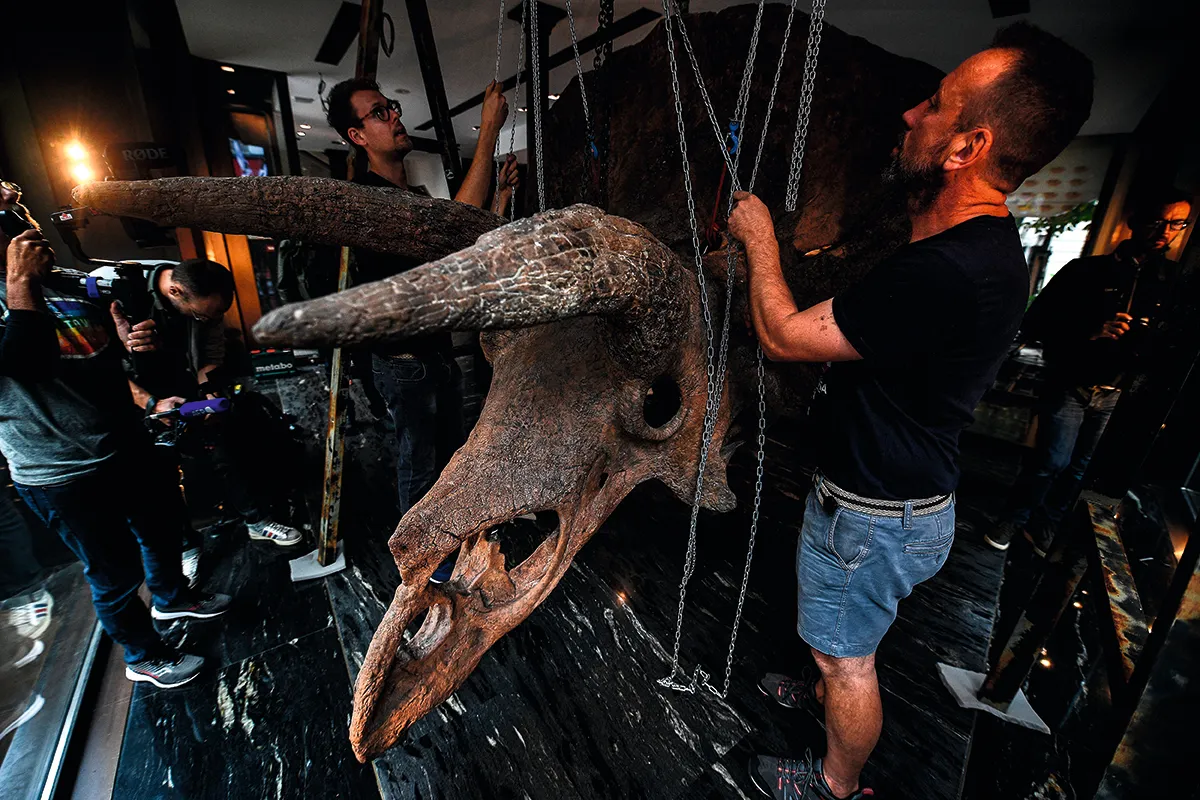
Paris, France
31 August
This gigantic skull belongs to Big John, the largest fossilised Triceratops ever found. In this image, which was taken in August,
the fossil was in the process of being displayed in a gallery in Paris, ahead of going up for auction in October with the rest of
its remains.
Unearthed in South Dakota in 2014, the three-horned herbivore would have been grazing on the landscape some 66 million years ago, during the Cretaceous. When
Big John died, its body was submerged in mud, which preserved the skeleton. Palaeontologists were able to recover 200 pieces of the dinosaur (about 60 per cent), which went on to fetch a price of €6.6m (£5.6m approx) when sold at the auction.
Buckle up
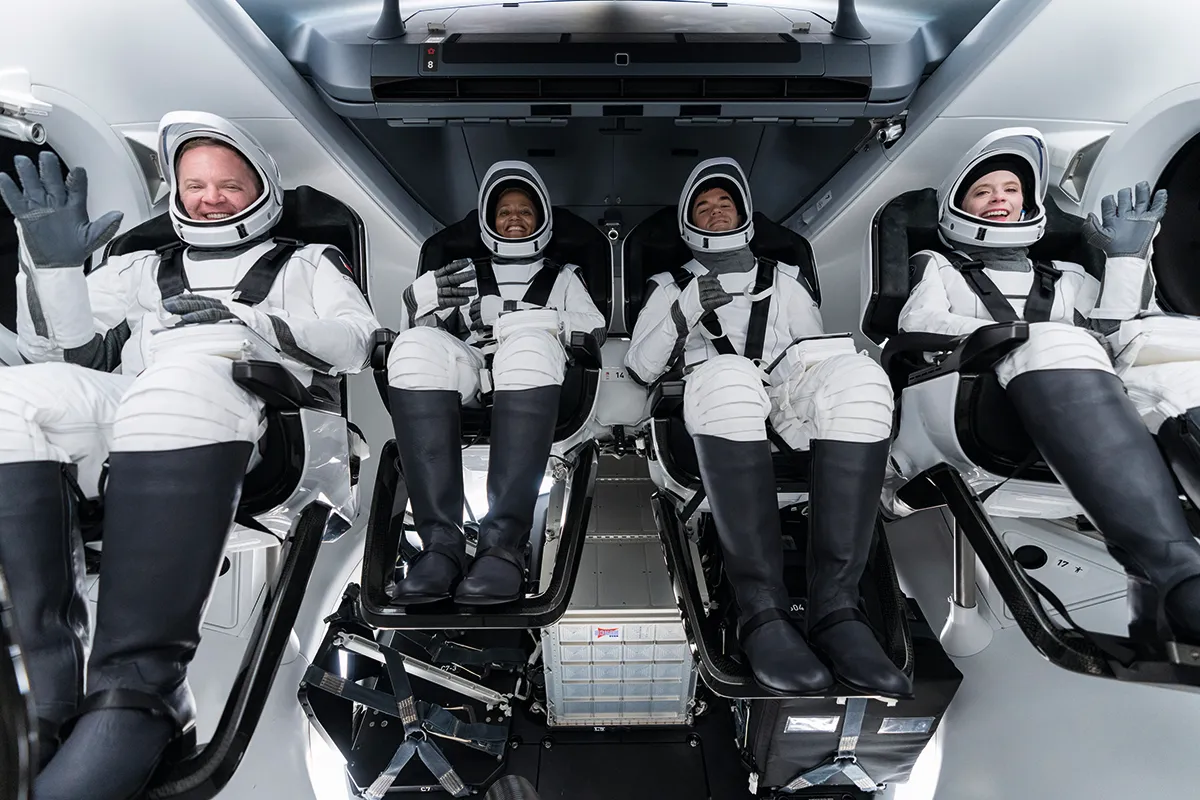
Kennedy Space Center, Florida, USA
15 September
The four people pictured here are about to be blasted into Earth orbit. Nothing special about that, right? Not now everyone’s so accustomed to spaceflight. The thing is, none of these individuals is an astronaut. Or at least, not until they reach space
they’re not.
They’re tourists (from left: Chris Sembroski, Sian Proctor, Jared Isaacman and Hayley Arceneaux) and have hitched a ride aboard Elon Musk’s SpaceX Crew Dragon capsule to become the first all-civilian crew to circle Earth from space, as part of the Inspiration4 mission. All four received commercial astronaut training from SpaceX. They spent three days in orbit after blasting off from Cape Canaveral, Florida, and returned safely, despite a technical issue with the capsule’s waste management system.